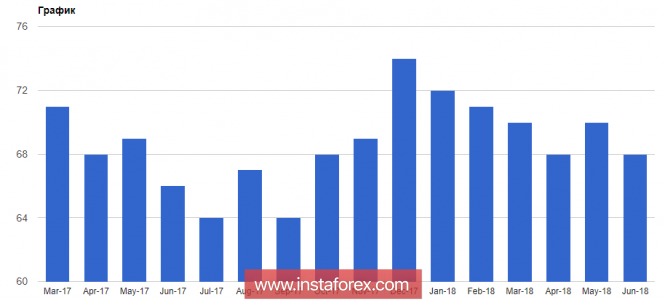
The European currency, despite the demonstration of a slight strengthening against the US dollar earlier this week, is likely to remain under pressure, and we should not expect a larger upward trend in the EURUSD pair in the near future. As I noted, buyers failed to get above the resistance at 1.1650, which leaves a good position for bears to return to the market with new large sales.
Monday's data on the confidence of builders in the US, which decreased due to the increase in wood prices, did not have a significant impact on the US dollar. According to the report of the National Association of Housing Builders of the United States, the US housing market index in June fell to 68 points. Economists had expected the index to be 70 points in June.

The statements of the Fed representatives were also ignored by the market.
On Monday, the new President of the Federal Reserve Bank of New York, all familiar to us from his former position in San Francisco, John Williams, made a speech. He noted that he would do everything possible to build confidence. Williams intends to ensure the stability of the financial system and the prosperity of the economy.
The performance of his colleagues Raphael Bostic was more specific. Bostic noted that the recent acceleration of consumer and company spending growth may be only temporary, but the growth of US GDP in the 2nd quarter of this year may exceed all expectations. The Fed representative also does not see any sharp shift in inflation expectations, but expects three rate hikes in 2018. According to Bostic, it is prudent to continue moving towards a more neutral policy on the part of the Fed.
More interesting news were the statements of the US President regarding trade tariffs.
Trump ordered a list of Chinese goods worth $200 billion for additional tariffs of 10%, adding that the duties will come into force if China does not change its practices. The US president also threatened with retaliatory measures if China again increased its own tariffs.
Against the backdrop of the growing trade war between China and the United States, traders returned to the safe haven, which includes the Japanese yen, which grew by almost 1% against the US dollar on Tuesday in the Asian session.
Also the support of the yen was provided by news that Japanese Prime Minister Shinzo Abe appealed to the authorities of Beijing with an attempt to find a common theme for communication. It is about the trade relations between Japan and China after the measures taken by the US regarding trade with China.